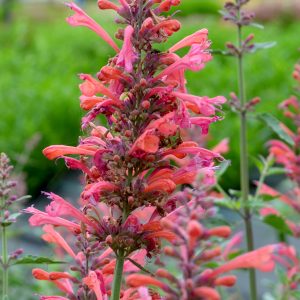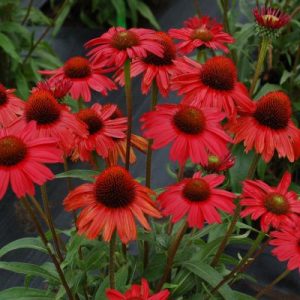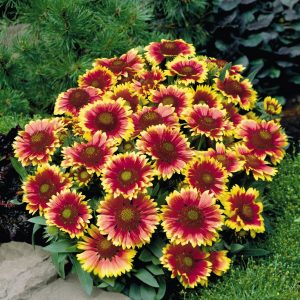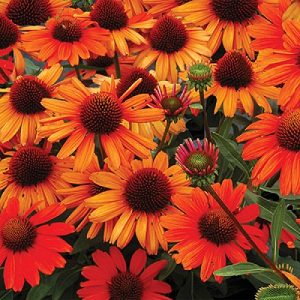
Agastache Kudos Coral
Amazingly free flowering and easy to grow. ‘Kudos Coral’ has an impeccable habit and long lasting, glowing color. Warm, coral colored plumes are dense with a sweet honey-mint scent. A real standout in mixed containers, or as a border plant.

Echinacea – Kismet Red
Numerous intense red flowers bloom for weeks on an upright, compact habit. Perfect for mixed beds or borders.

Gaillardia grandiflora – Arizona Sun Blanket Flower
2005 All-America Selections Winner 10″ tall x 12″ wide. 'Arizona Sun' is one of our finest Gaillardia cultivars with showy three-inch single flowers that are mahogany-red with bright yellow edges. It has better uniformity and more numerous flowers than older varieties and is a remarkable garden performer. Plant in well-drained infertile soils for best results. Deadhead occasionally to keep the flowers coming all summer long

